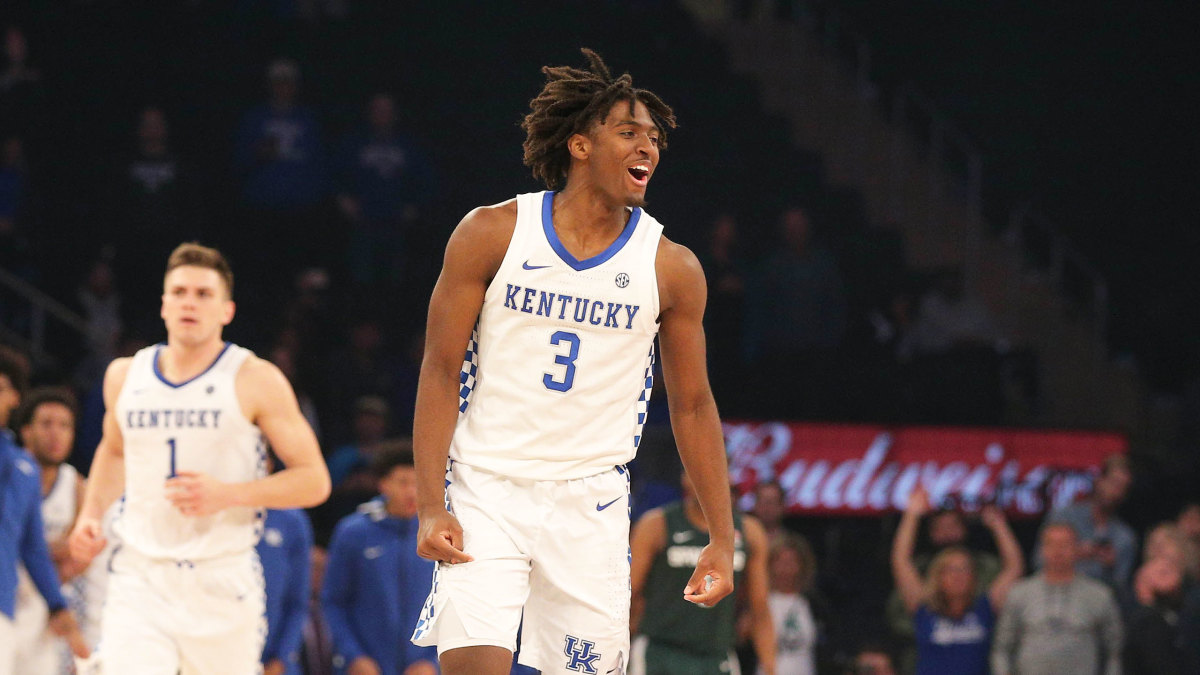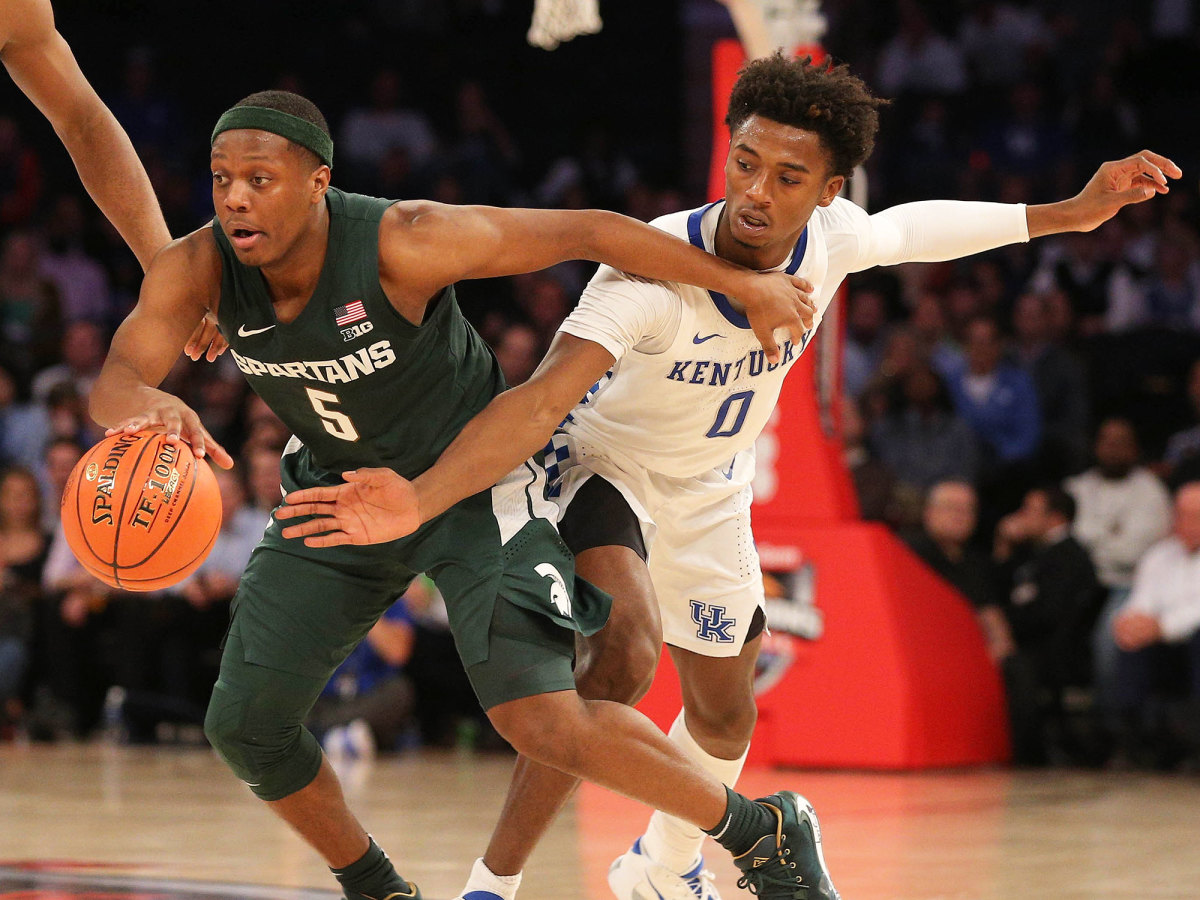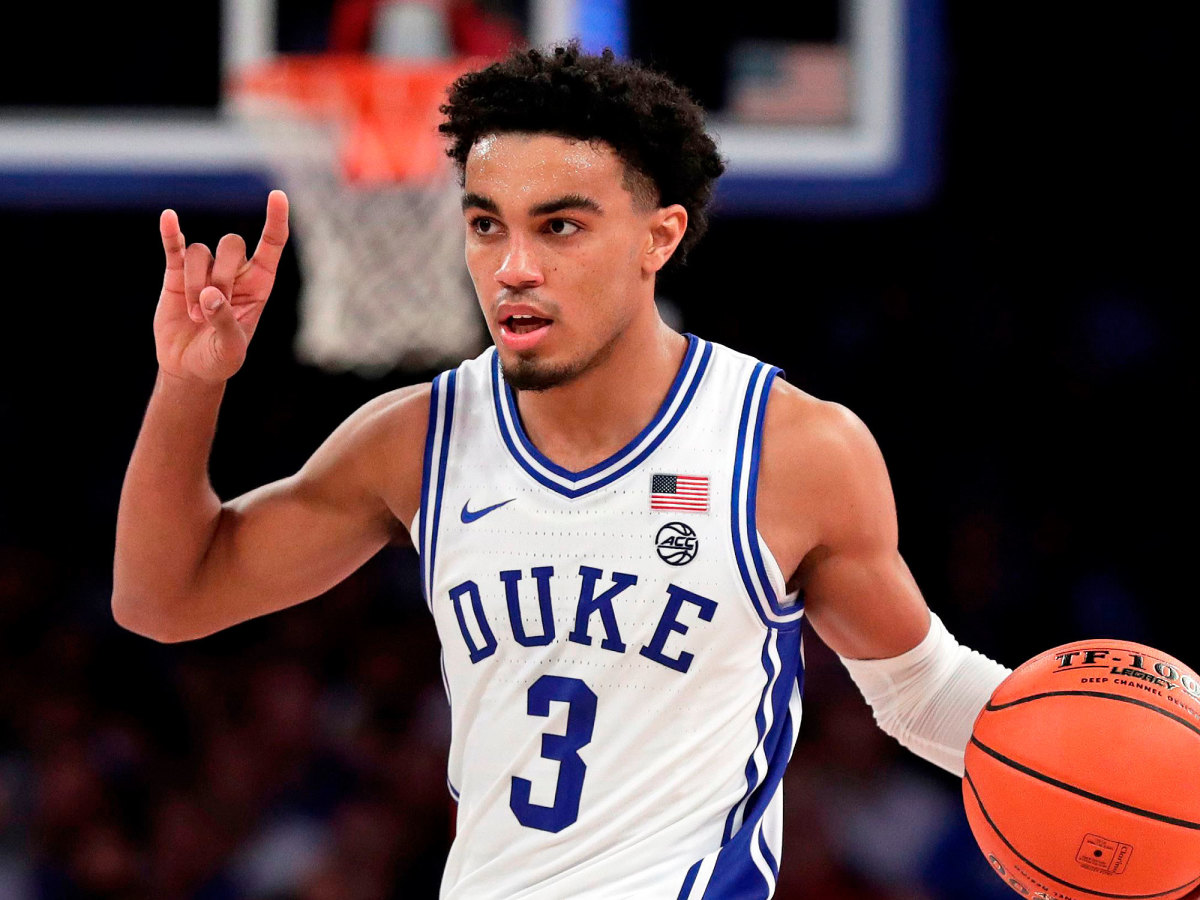Duke and Kentucky Show Off Reloaded Rosters, Adaptability in Champions Classic Wins


NEW YORK — College basketball is the ultimate transient sport, especially at the high end—early entries to the draft, dozens of transfers, the turnover is constant. Duke and Kentucky, programs built to handle that churn, showed Tuesday how different they can be from year to year while maintaining the usual success.
Kansas and Michigan State, the more experienced teams in this Champions Classic, showed that seasoning isn’t everything.
A year ago, the Blue Devils were sprinting past and dunking over Kentucky in the Champions Classic, scoring a mind-boggling 118 points and winning by 34. They were a star-driven glam squad, led by the startling athleticism of Zion Williamson and slashing game of R.J. Barrett, with a skimpy supporting cast.
Here, in the same event, a dramatically different Duke showed up. This fourth-ranked team was a more egalitarian group of grinders who were up for the test of battling physical No. 3 Kansas, winning with defense and depth. There were a few glimpses of freshman precocity and soaring athleticism, but this was more a game of stops and steals than dunks and drives.
Mike Krzyzewski watched his team score 50 points fewer than it did in the season opener a year ago—and still win, beating a stunningly clumsy Kansas team 68-66. This was after scoring less than 70 just three times in 34 games last season. Nobody scored more than 15 points, after a season in which two players averaged more than 22.
“We’re tough and deep,” said senior Jack White, who has, by misfiring necessity, diversified his game beyond perimeter shooting to include relentless rebounding and defensive vigilance.
Indeed, Krzyzewski played nine guys at least 12 minutes, with only sophomore point guard Tre Jones seeing more than 30. This was after leaning on four players for 30 or more minutes per game in 2018-19.
“One of the things I have to learn how to do is sub,” K quipped. “The last couple years I had a starting five and maybe one guy.”
This year the rotation could be eight or nine. But, it should be noted, four of those players will be freshmen. Of Duke’s four double-figure scorers against Kansas, three were freshmen: Cassius Stanley with a high-flying 13, Vernon Carey with 11 and Matthew Hurt with 11.

Kentucky, meanwhile, looks like a team ready to shift its emphasis to the perimeter following the Wildcats’ near-wire-to-wire defeat of No. 1 Michigan State, 69-62. John Calipari’s preferred lineups are big, bigger and biggest, including last year’s XL team. True to form, Cal began this game with a front court that goes 6-11 (Nick Richards), 6-9 (Nate Sestina) and 6-6 (Kahlil Whitney).
But he ended the game relying on three guys who stand 6-3 or shorter—and who will probably dictate how good this team will be. Immanuel Quickley had 10 points, making seven of eight free throws. Point guard Ashton Hagans had 11 while dogging Spartans star Cassius Winston through an array of pick-and-roll situations. And the newest freshman star of the ‘Cats, Tyrese Maxey, came off the bench to score 26 dazzling points—the most ever in a freshman debut game under John Calipari since he came to Kentucky in 2009.
“Be that sniper,” Calipari said he told Maxey before the game, urging him to shoot like the player he watched at South Garland High School in Texas.
Maxey sniped away, and the Spartans had no answer. Michigan State hung around despite foul trouble and aimless offense, pulling to within two points with 1:27 left, but Maxey dropped a dagger three-pointer from a good 25 feet out over 6-foot-6 Aaron Henry at the minute mark to put the game away.
“I’ve taken that shot a thousand times,” Maxey said. “(Henry) dropped his back foot and I knew I was going to knock it down.”
Taking that shot in an empty gym is one thing. Taking it in Madison Square Garden, with the game on the line and the nation’s No. 1 team breathing down your neck, is something else. Maxey showed every sign that no moment is going to be too big for him this season.
What else do Duke and Kentucky have in common, beyond adaptability? Talent, of course. These were, according to Rivals.com, once again the highest-rated freshman classes in the country in terms of average star rating—Duke checking in at 4.75 and Kentucky next at 4.6.
So, yeah, the young kids will once again be vitally important to how far the Blue Devils and Wildcats go come March. But the most important player for each figures to be a sophomore point guard who might have come to college thinking one-and-done but wound up staying for (at least) a second season.
Jones, who went 39 minutes against Kansas, led the Blue Devils in scoring (15), assists (seven) and tied for the most rebounds (six). He’s also the team’s best defender.
“Tre’s a bad man,” White said of his teammate.

A year after caddying for Zion, Barrett and Cam Reddish, Jones is Duke’s leader. Krzyzewski didn’t hesitate to say as much Tuesday.
“It’s his team,” K said. “He feels less pressure with more responsibility.”
For Kentucky, the tone setter is Hagans. A blindingly quick pick-pocket, Hagans looks like he will be a more solid on-ball defender this year.
“The pit bull,” Maxey called Hagans.
Calipari said Maxey’s confidence had actually been hurt by being harassed daily in practice by Hagans. Playing against Michigan State, while no picnic, provided him a slight respite.
Michigan State and Kansas exit New York wondering how they could perform so poorly here with veteran lineups. Kansas committed an ungodly 28 turnovers, chucking the ball all over Manhattan, quite literally giving the game away. The Spartans were helpless to find dependable complementary parts to Winston—hamstrung by foul trouble in the first half and undone by a glaring lack of shot-making in the second.
The season can and will get better for both of them, of course. A top-four team losing to another top-four team is hardly a reason for serious concern.
“I don’t know that a game, win or lose, on Nov. 5 is going to count much in March,” Kansas coach Bill Self said. “But still, there are lots of things we can learn from this game and hopefully improve on.”
The lesson learned from watching Duke and Kentucky: in an ever-changing sport, programs accustomed to the churn can often handle it best. Especially when they also have the best players.
